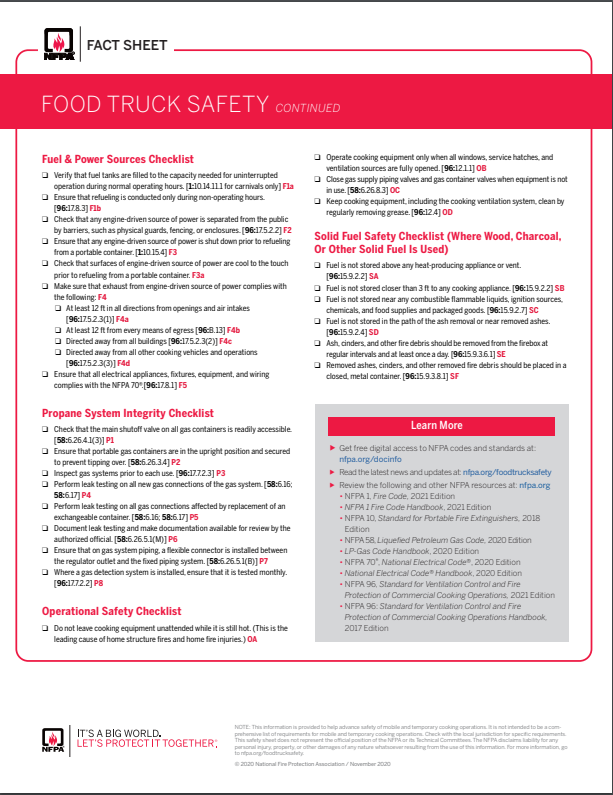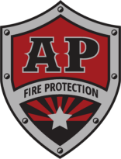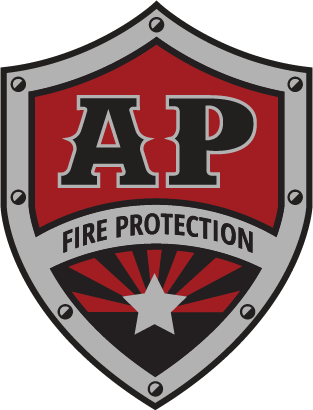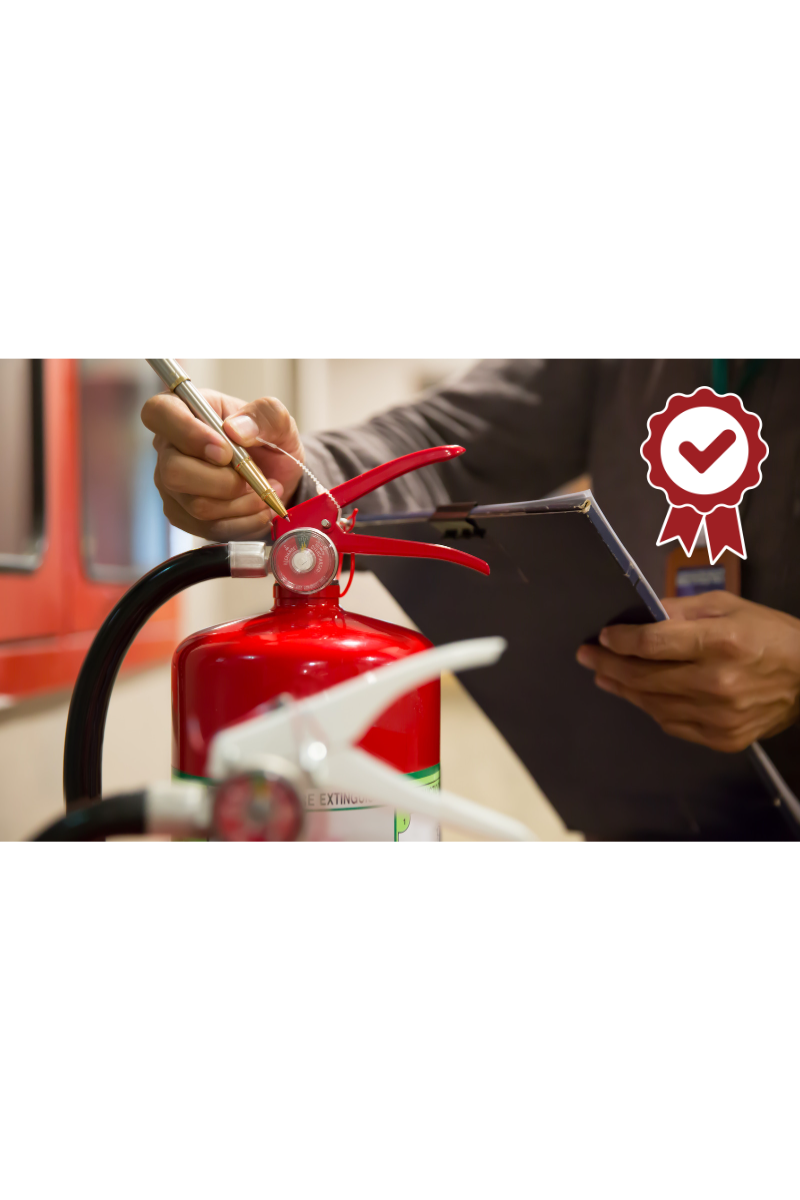
Adding fire safety requirements in Section 50.7 of NFPA 1, Fire Code, and Adoptable Annex B of the 2017 edition of NFPA 96, Standard for Ventilation Control and Fire Protection of Commercial Cooking Operations for food trucks makes adoption of enforceable code easier for local governments and fosters public safety. But if regulations aren’t in place within a jurisdiction, there are many steps food truck operators can take to prevent and mitigate fires.
· Schedule regular inspections and maintenance of equipment and keep an eye out for hazards like frayed wires or combustible items near power sources.
· Train employees to never throw water on a grease fire. It can cause the grease to splatter and spread, making the fire worse. Class K fire extinguishers are best for fighting grease fires. Food trucks need two types of fire extinguishers: Class K extinguishers for fighting grease fires and Class ABC extinguishers for putting out standard fires, such as those involving paper products.
· Follow NFPA regulations for hydrostatically testing fire extinguishers and propane tanks. Make sure the equipment is stamped with the testing date to ensure it remains in proper working order.
· Regularly inspect kitchen exhaust systems within the truck for grease build-up. The frequency of inspections is defined in NFPA 96 (Annex B), based on the volume and type of cooking.
· Clean up grease at least once a day, concentrating on walls, work surfaces, ranges, fryers, broilers, grills, convection ovens, vents, and filters. Pay extra attention to exhaust hoods, where grease buildup can restrict air flow. NFPA 96 (Annex B) provides extensive instructions for cleaning food truck exhaust systems.
· Keep the food truck as tidy as possible to reduce fire hazards. Keep paper products, linens, boxes, and food away from heat and cooking sources. Properly dispose of soiled rags, trash, cardboard boxes, and wooden pallets at least once a day.
· Remove ashes from wood- and charcoal-burning ovens at least once a day. NFPA 96 (Annex B) provides extensive guidance for ash removal.
· At least one employee on every shift should know how to shut off propane and electrical power in case of an emergency. Also designate one worker per shift to act as an evacuation manager with duties that include calling 911, determining when an evacuation is necessary, ensuring that everyone exits the truck safely, and leading customers a safe distance away. Along those lines, ensure that everyone on your staff knows the location of all exits on the truck.
· Store flammable liquids in their original containers or other puncture-resistant, tightly sealed vessels. Food truck kitchens are small, but operators must do their best to store these liquids in well-ventilated areas away from combustible supplies, food, food preparation areas, or sources of flames.
· Use chemical solutions in well-ventilated areas and immediately clean up any spills. Never mix chemicals unless instructed by the manufacturer’s directions.


To make its new requirements easily digestible by the food truck industry, NFPA created a free downloadable fact sheet that maps out specific areas of a truck with corresponding tips and information on proper usage and care.








Leave a Reply